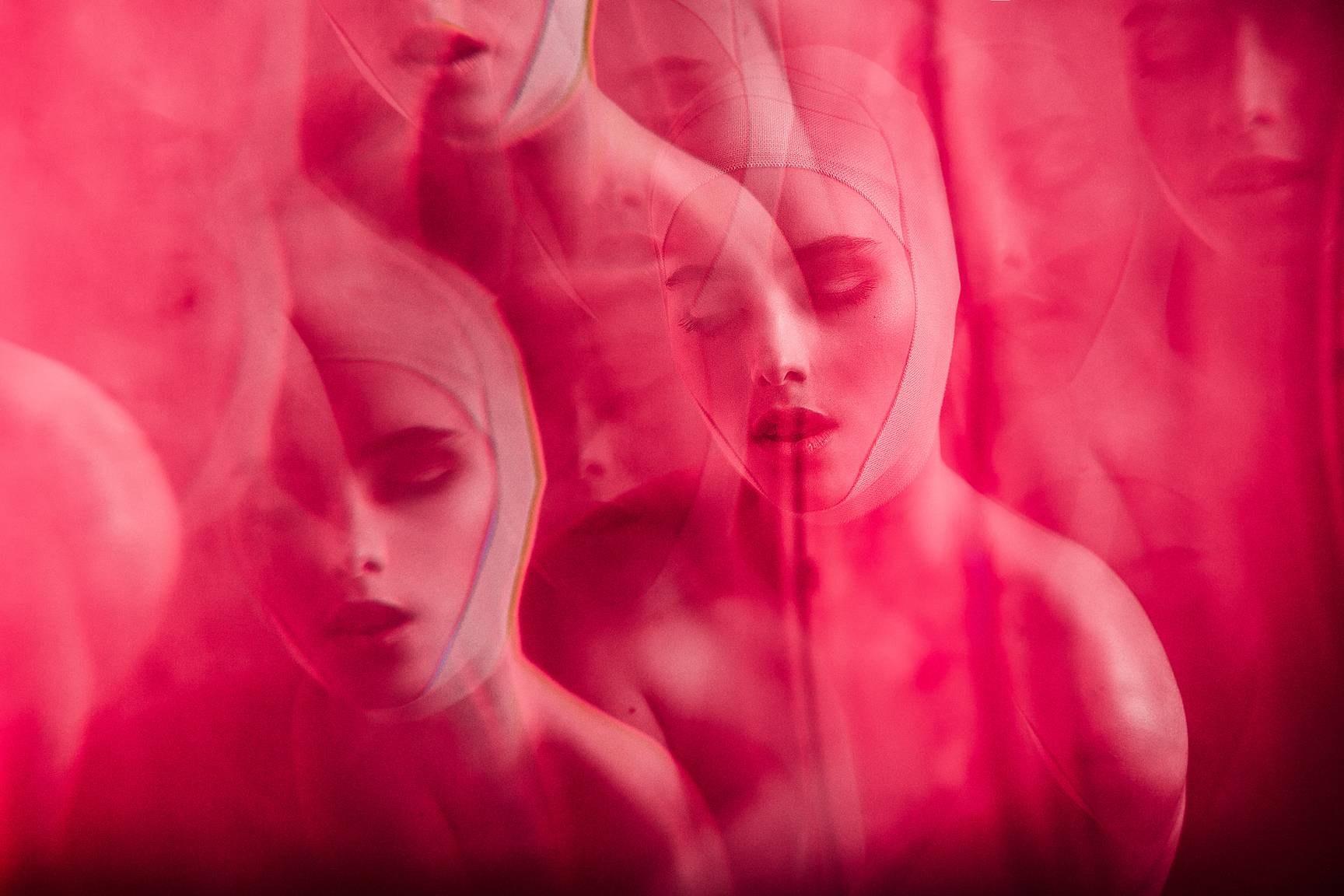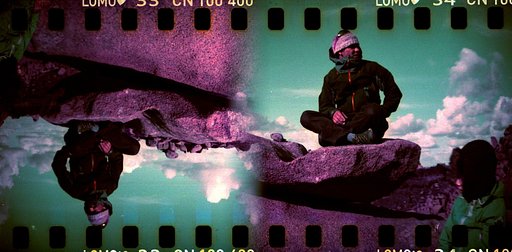The Captivating World Of Fashion Photography: An Interview With Sebastian Hilgetag
8 Share TweetThere is a saying that a picture is worth a thousand words. Recently, we had a chance of getting to know an amazing fashion photographer and a visual designer Sebastian Hilgetag, and we couldn’t agree more. He was always drawn to the artistic side of the work and his stunning photographs are definitely the proof. Ever since he started exploring the world of photography Sebastian made the unbreakable connection with his camera. In this interview, he speaks of the challenges he faced in this profession, social media and what drives him to take inspiring photos.

Hey, Sebastian! It's good to have you in our magazine! Can you tell us when did you realize photography was something you wanted to do?
Thank you so much for having me Lomography! It’s difficult for me to say in which moment I realized that I want to become a photographer. Since I studied visual communications in Potsdam, Germany I have always been close to the artistic side of work.
The first course I chose during my studies was a photography course, so maybe it has been already clear to me at this point on a subconscious level. By the time I had finished my studies with the master degree I had grown stronger and stronger into the topic of shooting models and also had my first publications at this point.
Who was the first person that stood in front of your lens? How much has your style of photography evolved since then?
My first shooting I had with a very good friend of mine back in the days. She has also been interested in photography, and we spoke the same visual language at that time. My style had to evolve of course. A lot of photographers including myself started out with way too much going on in their photos (at least more than they can handle).
So I began to strip down my style over the years. The most important thing I learned during the years has been to minimise my setups. Even though I’m mainly shooting models, I think this also applies to the most fields of photography.
Most of your models are women. How do you help them feel comfortable and confident while shooting with you?
That’s a good question! First of all most of the time, there is a makeup artist present when shooting. But more importantly, I need to know the professional limits of the models before shooting since I want to avoid uncomfortable situations during the creative process. Respect for the feelings of the models comes first for me during the shooting. When I have a sense that the models are not comfortable in their outfits or if they feel too naked this needs to be changed. You can see in a photo if a person hasn’t been comfortable and I can’t afford this to happen.
In your opinion, what is that makes your photography stand out from the rest?
People tell me quite often that they can spot a photo taken by me since I have a particular style. When you check current and upcoming photographers that are successful on social media, you will see that most of them can only do one topic, one kind of (model) photography. Moreover, a lot of them are not able to work with flash, because it’s too much effort for them. I’m not a fan of this approach on both sides – industry, and creators. I get bored quite quickly; this is why I try to keep my shootings not only different for me, but also for the audience and potential clients.
That means that I’m working on varying between outdoor, indoor and studio shootings. Most of my natural looking light situations I created with flashes, it gives you more control than available light. Second, I love to change my equipment. Sometimes I’m shooting digital, and sometimes I’m experimenting with all kinds of analog cameras on color and black and white film. So I would say what makes me stand out is the fact that I’m not limiting myself to one style but love to experiment in different fields of modern fashion photography.
What fuels your creativity? What has been your biggest challenge in your career so far?
I would say the fuel for my creativity is music. Music and my photography both have in common that we are trying to create a particular mood with our creation. I love for example to sit down with an excellent LP in the night and start to work on my image processing and retouch routine. Of course, everyone would take a different kind of inspiration from a certain kind of music, but I think this is what makes it such a rich source of inspiration.
On the other hand, I have my favorite photographers that can also be a very nice source of inspiration. Sometimes it’s good to translate a topic they worked on into my language. The biggest challenge in my career has been the lack of inspiration. It feels awful when you want to come up with ideas, but nothing is inspiring you.
What is your advice on how to overcome those challenges?
In these times it has been best for me just to get out and start something. Sometimes collaborations in a team you already know can restart your creativity. I think inspiration can also fuel your ideas and bring them back to life. Not just by checking the work of other artists but also in music and movies. Usually, it’s just one key-visual that I take as an inspiration, and then I start to create my own story around it.
Besides being a photographer you are also a visual designer. How do you balance between all the photography work and this?
Being a visual designer helps me a lot with my job as a photographer because it takes away my thoughts from the photography for a certain time and forces me to refresh. With this way of working, I’m not getting bored with what I’m doing, and I think this is what drives my passion. There is also a lot of intersecting parts in those fields of work where the knowledge of one field comes in handy. For example, when you're doing the creative direction for a new fashion brand it is constructive to have the knowledge of imagery and contemporary photography as well as to define the direction for the branding and visuality.
How important is social media for your line of work?
In general, I would say there are two ways to be successful nowadays. It’s through connections and networking, or you grow your visibility through social media. But, social media can be a dangerous tool too, because every social media platform is its universe. There are ‘’stars’’ on every platform but just because they have thousands of followers doesn’t mean that they can live from what they are doing. For me, the most important platform is Instagram at the moment. I use it as a portfolio and to gain feedback on my work through my community. Instagram is also a nice way to find new inspiration. I follow a lot of real photographers and graphic designers there.
What's a day like in the life of a fashion photographer?
Most of the time, a day in the life of a fashion photographer is way much easier than you would think. It starts with coffee and answering emails and then retouching (I’m doing my retouch completely by myself because I think it’s an important part of the process of photography).
Also creating mood-boards and finding ideas for future shootings is in the daily routine. On more exciting days there will be shooting for a model agency or a client where I have to set up the location and lighting before we shoot.
Do you have any new projects you would like to share with us?
At the moment I’m thinking to start a personal project that I am excited about. I love old and analog cameras and own a few myself including a quirky Zenit 3 I inherited from my step-grandad but also some sharp cameras and lenses like my Zenza Bronica ETRSI.
I want to start a series where I’m using a different camera for every shooting. Just one camera, two rolls of film and a model. I’m always excited about how far you can push those tools to a modern standard.
On the professional side, I’m discussing with different potential clients for upcoming collaborations which I am excited about as well. I am also looking for representation through an agency at the moment to step deeper into the commercial fields of fashion photography.
Make-Up Artists: Julia Firefly, Anne-Marie Wittchen, Julia Ewert, Louisa Gniffke, Michelle Wolfe
All photographs shown in this article were used by the permission of Sebastian Hilgetag. If you want to see more of his work, follow Sebastian on Instagram and check out his Website as well as his Facebook page.
geschrieben von Ivana Džamić am 2017-09-22 in #Menschen #fashion-photography #sebastianhilgetag

































Keine Kommentare